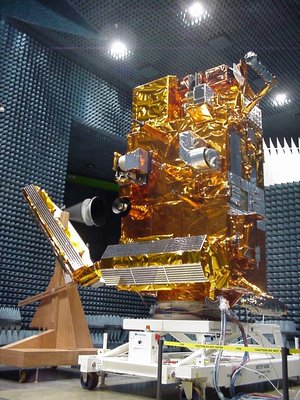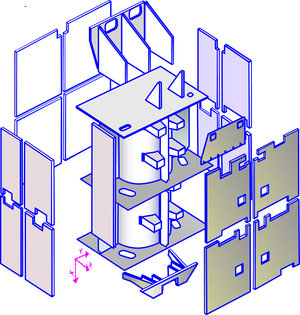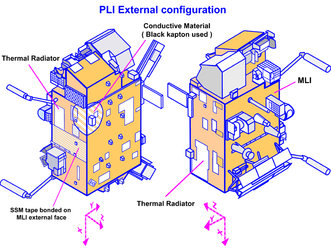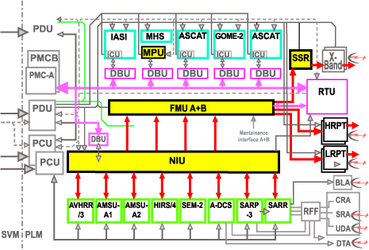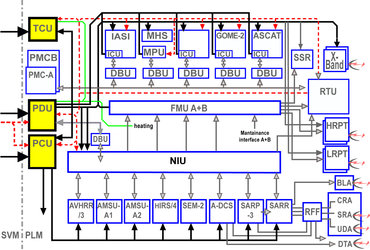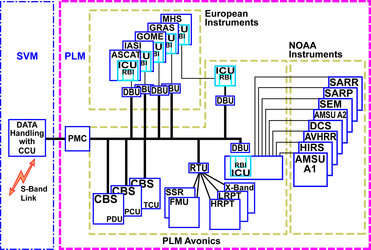Payload Module measurement data acquisition, handling, storage
On the MetOp spacecraft command and control is implemented separately to measurement data handling. This does not work for the American instruments inherited from the National Oceanic and Atmospheric Administration (NOAA). A dedicated NOAA Interface Unit (NIU) has therefore been implemented to adapt the NOAA interfaces to European standards.
The NIU performs command and control through a dedicated Instrument Control Unit (ICU) and collects measurement data through a Digital Signal Processor (DSP). It also compresses the Advanced Very High Resolution Radiometer (AVHRR) channels. To allow for selective encryption in the Formatting and Multiplexing Unit (FMU), the NIU provides measurement data to the FMU via four distinct data streams:
- NOAA Interface Unit (NIU)
- Microwave Humidity Sounder (MHS) Protocol conversion Unit (MPU)
- Formatting and Multiplexing Unit (FMU)
- Solid State Recorder (SSR)
The Microwave Humidity Sounder (MHS) instrument has been designed and built to the NOAA 2000 standard using 1553 buses. A dedicated MHS Protocol conversion Unit (MPU) adapts the command and control and the measurement data bus of the MHS to the European instrument interface standard. Although the MPU contains an ICU it mainly uses the MHS internal processor control features.
The FMU collects measurement data from the various instruments and the NIU and MPU. The interface uses standard Consultative Committee for Space Data Systems (CCSDS) formats and provides switchable encryption functions. The FMU provides at its outputs three different data streams for the various measurement data transmission subsystems and data storage.
Global coverage of the measurement data is achieved by a recording of all measurement data over a complete orbit from ground station to ground station. Similar to the Environmental Satellite (ENVISAT) and Cluster, a Solid State Recorder (SSR) is used to do this. Simultaneous recording and dumping is supported such that special measures to avoid data losses during down-link are not required. At each ground station pass the recorder can be dumped as far as the actual recording position, i.e. also measurement data acquired during the pass can immediately be down-linked within the same pass. The SSR memories are sufficient to provide the necessary internal redundancies as well as to cover worst case down-link.



